The streets of Kathmandu transformed into a sea of red and blue on March 9, 2025, as thousands of supporters waved national flags and chanted, "Raja aau, desh bachau" (King, come back and save the country). Former King Gyanendra Shah, now 77, arrived at Tribhuvan International Airport to a hero's welcome after spending six weeks in western Nepal.
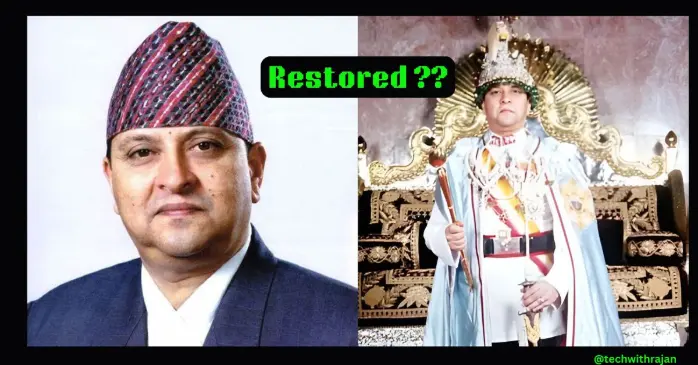
The scene was extraordinary – an estimated 10,000 people blocked the main entrance, forcing regular passengers to trudge their way in and out on foot. As riot police formed barriers between the crowds and the airport facilities, one question echoed across Nepal and beyond: Could the abolished monarchy truly make a comeback after 17 years?
To understand this remarkable moment in Nepal's history, we must journey back to the beginning of Gyanendra's story – a tale marked by unusual twists of fate, political upheaval, and a nation's search for stability.
1. A Royal Birth Under Superstitious Shadows:

On a warm summer day, July 7, 1947, Gyanendra Bir Bikram Shah Dev was born in the opulent halls of old Narayanhiti Royal Palace in Kathmandu. As the second son of Crown Prince Mahendra and Crown Princess Indra, his royal future seemed secure but not immediate – he had an older brother, Birendra, who stood ahead in the line of succession.
Yet from his first breath, Gyanendra's life took an unusual turn. Court astrologers delivered a troubling message to his father: looking upon the newborn prince would bring misfortune. Whether from genuine superstition or political maneuvering, this proclamation resulted in young Gyanendra being whisked away to his grandmother's care, separated from his parents during his earliest days.
This curious beginning foreshadowed an unconventional royal journey that would include not one but two ascensions to the throne – the first as a mere child of three.
2. An Accidental Child King: First Reign (1950-1951):
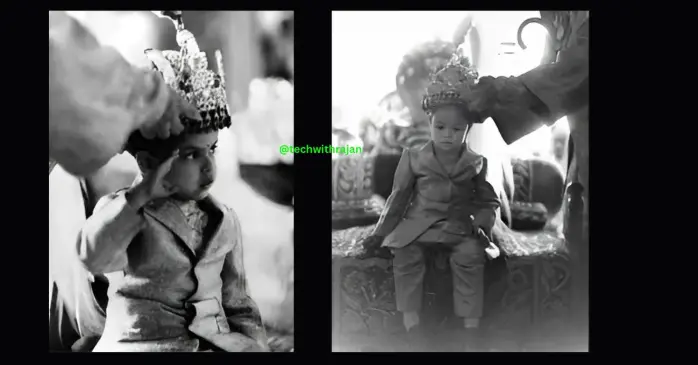
November 1950 brought political turmoil to Nepal. In a dramatic turn of events, King Tribhuvan (Gyanendra's grandfather), along with Crown Prince Mahendra and most royal family members, fled to India during a political revolt against the powerful Rana dynasty of prime ministers who had effectively ruled Nepal for generations.
Left behind was three-year-old Prince Gyanendra – the only male member of the royal family remaining in the country. Seizing the opportunity, Prime Minister Mohan Shamsher declared the toddler king on November 7, 1950. The Rana government went so far as to issue coins bearing the child's image and allocated an annual royal budget of 300,000 rupees.
Little Gyanendra couldn't possibly comprehend the political chess game in which he had become a pawn. His coronation represented the Rana regime's desperate attempt to maintain control by installing a puppet monarch they could manipulate. The international community, however, refused to recognize this arrangement.
Within months, pressure from India and growing opposition to Rana rule forced a compromise. In January 1951, King Tribhuvan returned from exile to reclaim his throne, ending Gyanendra's brief, unrecognized reign. The child who had briefly worn a crown returned to the ordinary life of a prince.
3. Education and Royal Preparation:
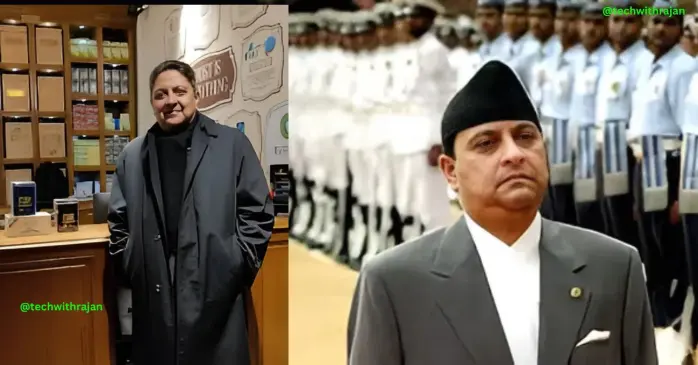
As Nepal gradually moved toward greater democratization under King Tribhuvan and later King Mahendra (who succeeded his father in 1955), young Gyanendra pursued his education alongside his elder brother. The princes attended the prestigious St. Joseph's School in Darjeeling, India, receiving the kind of cosmopolitan education befitting future leaders.
In 1969, Gyanendra completed his higher education at Tribhuvan University in Kathmandu. By this time, his brother Birendra was being groomed as the future king, allowing Gyanendra to develop interests beyond immediate governance. He displayed particular passion for environmental conservation, eventually serving as chairman of the King Mahendra Trust for Nature Conservation from 1982 until his later accession to the throne.
On May 1, 1970, at age 22, Gyanendra married his second cousin, Komal Rajya Lakshmi Devi, in a lavish royal ceremony. The couple welcomed two children: Prince Paras Bir Bikram Shah Dev on December 30, 1971, and Princess Prerana Rajya Lakshmi Devi Singh on February 20, 1978. During these years, Gyanendra lived the comfortable life of a royal prince without the immediate burdens of the crown, developing business interests and focusing on conservation work.
4. Tragedy and Second Ascension: The Royal Massacre:
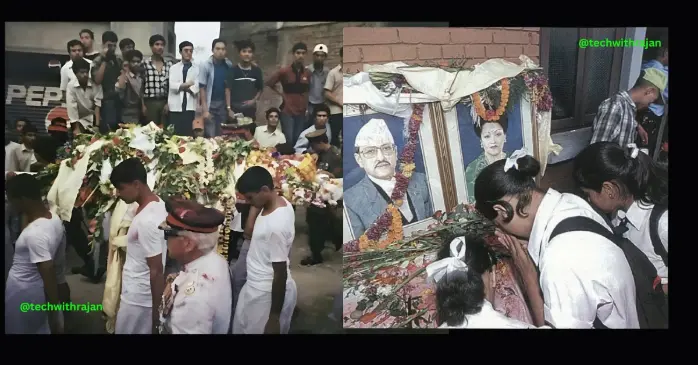
June 1, 2001, stands as perhaps the darkest day in Nepal's modern history. During a regular family dinner at Narayanhiti Palace, Crown Prince Dipendra allegedly massacred nine members of the royal family, including King Birendra and Queen Aishwarya, before turning the gun on himself. The crown prince lingered in a coma for three days before succumbing to his self-inflicted wounds.
As the nation reeled in shock and grief, Gyanendra – who had fortuitously missed the family gathering – was named regent while his nephew lay dying. Upon Dipendra's death on June 4, 2001, Gyanendra ascended to the throne for the second time, now as a 53-year-old man inheriting a monarchy in crisis.
The royal massacre left deep wounds in the Nepalese psyche. Conspiracy theories proliferated, with many citizens skeptical of the official narrative. Though a two-person investigation committee interviewed over 100 witnesses and concluded that Crown Prince Dipendra had indeed committed the killings, public trust had been severely damaged.
Gyanendra faced the nearly impossible task of restoring confidence in a shaken monarchy while simultaneously addressing the growing Maoist insurgency that had claimed thousands of lives since 1996.
5. The Path to Direct Rule:
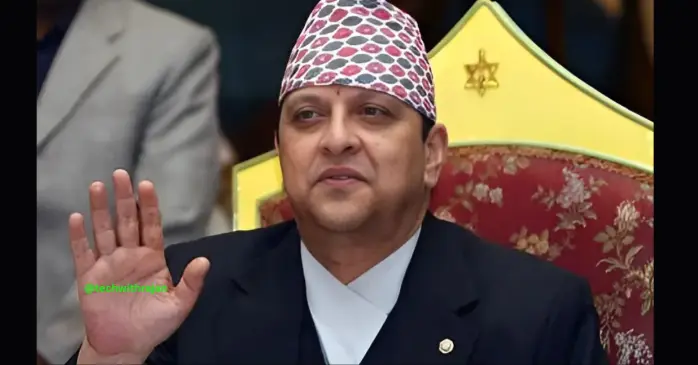
Unlike his brother King Birendra, who had embraced constitutional monarchy with limited royal power, Gyanendra took a more assertive approach to governance. Where Birendra had carefully balanced royal authority with democratic institutions, Gyanendra increasingly viewed Nepal's political parties as ineffective in addressing the Maoist rebellion and political instability.
His opportunity for greater control came in May 2002, when he supported Prime Minister Sher Bahadur Deuba's dissolution of parliament. By October of that year, he had dismissed Deuba entirely, citing the premier's inability to hold elections amid the insurgency.
Between 2002 and early 2005, Gyanendra appointed and dismissed three prime ministers in succession, growing increasingly frustrated with what he perceived as political gridlock. Then, on February 1, 2005, the king took his most controversial step: he dismissed Deuba's government for a second time and assumed direct rule, promising to restore "peace and effective democracy" within three years.
"I have exercised the rights given to the crown under the present constitution," Gyanendra announced to a stunned nation. "This is not my cup of tea, but I cannot remain a mute spectator when the people are suffering."
His direct rule came with restrictions on civil liberties, including press freedoms and constitutional protections against preventive detention. International organizations expressed grave concerns about journalist safety and democratic backsliding. While some Nepalese initially supported the king's decisive action against the Maoist threat, this goodwill quickly eroded as his authoritarian tendencies became apparent.
6. The Fall: From Absolute Monarchy to Exile:
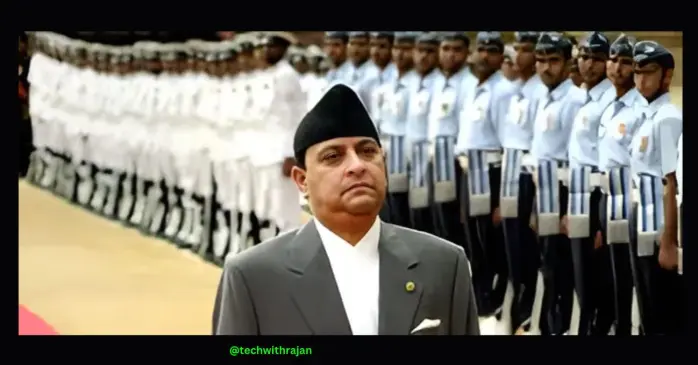
The king's gambit failed spectacularly. Rather than weakening the Maoists, his seizure of power inadvertently created common cause between the rebels and mainstream political parties. By April 2006, this seven-party alliance, working alongside the underground Maoist movement, organized massive protests in Kathmandu.
As demonstrations intensified, government forces responded with curfews enforced by live ammunition and tear gas. After 23 protesters were killed, Gyanendra recognized the unsustainable nature of his position. On April 21, 2006, he announced he would yield executive authority to a new prime minister chosen by the political parties.
This concession proved insufficient. On April 24, 2006, Gyanendra reinstated the previous parliament in a televised address, effectively ending his direct rule. The restored parliament, under Prime Minister Girija Prasad Koirala, quickly moved to strip the king of his remaining powers.
On June 10, 2006, Parliament removed the king's right to veto laws and declared the prime minister, not the monarch, head of state. The following two years saw the steady dismantling of royal authority. The November 2006 peace accord with Maoists included provisions for an interim constitution that reduced the king to a figurehead.
The final blow came on May 28, 2008, when the newly elected Constituent Assembly, in its first act, abolished the 240-year-old Shah dynasty monarchy altogether, declaring Nepal a federal democratic republic. Gyanendra accepted this verdict with surprising grace. On June 11, 2008, he departed Narayanhiti Palace for his new residence at Nagarjuna Palace, marking what many called "a major symbolic moment in the fall of the Shah dynasty."
7. Life as a Commoner: Business Interests and Quiet Dignity:
Unlike many deposed monarchs who flee into exile, Gyanendra chose to remain in Nepal as a private citizen. Though the government nationalized properties he had inherited from his brother King Birendra, including the Narayanhiti Palace (now a museum), he retained considerable wealth from before his enthronement.
As a businessman with extensive state connections, Gyanendra reportedly held investments worth at least $200 million across 35 companies in Nepal, with additional assets potentially held abroad. His portfolio included significant stakes in Soaltee Hotel (estimated at $100 million with a 47% stake), Himalayan Goodricke Tea (54% stake), Surya Nepal Tobacco (39% stake), and numerous other ventures spanning hospitality, manufacturing, and power generation.
He also maintained ownership of vast land holdings throughout Nepal, including his personal residence, Nirmal Niwas Palace, situated on approximately 36 ropani of prime real estate in Maharajgunj. Additionally, he possessed invaluable Shah and Rana dynasty heirlooms, precious jewels, and artwork.
For several years after his deposition, Gyanendra maintained a relatively low profile, occasionally appearing at religious ceremonies or family functions. However, in a surprising 2008 interview with foreign reporters, he expressed dissatisfaction with the decision to abolish the monarchy, stating: "[The decision] doesn't reflect the majority view of the people. This isn't a democracy." He cited a survey showing 49% of respondents favored continuation of the monarchy in some form.
8. The Quiet Revival: Seeds of Monarchist Sentiment:
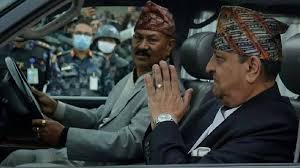
As Nepal's experiment with republican democracy unfolded, the promised stability and prosperity remained elusive. Between 2008 and 2025, the country saw numerous governments rise and fall, struggled with constitution-writing, endured a devastating 2015 earthquake, and faced persistent economic challenges.
Against this backdrop, monarchist sentiment began to simmer beneath the surface. In 2012, Gyanendra made headlines when he stated in an interview with News 24 TV channel that he would return as king, though he declined to specify a timeframe. More provocatively, he claimed a written agreement existed between himself and politicians that the constitutional monarchy would be restored when he relinquished power and reinstated Parliament.
His public appearances gradually began drawing larger crowds. In July 2019, thousands marched to his private residence at Nirmal Niwas Palace to celebrate his birthday. Though Gyanendra declined to meet with them, citing the recent deaths of relatives, visitors eagerly signed birthday registers kept at the palace.
In February 2023, the former king took a more overtly political stance, attending a public event in Jhapa district where he called for Nepal's transformation from a secular country back to a Hindu kingdom. This religious dimension added fuel to the monarchist movement, particularly among traditionalists who viewed the monarchy as inseparable from Nepal's Hindu identity.

Ultima Thunder Speaker Hits Nepal: A 110W Party Speaker to Rock Your World
The party scene in Nepal just got louder! Ultima Lifestyle has dropped its latest gem, the Ultima Thunder Speaker, a powerful 110W speaker that’s here to steal the show. Launched on March 7, 2025, this beast promises to shake up your gatherings with booming sound and cool features.
9. The 2020 Petition and Growing Support:
A significant milestone came in 2020 when the Rastriya Prajatantra Party-Nepal (RPP-N) submitted 2.35 million signatures to the Constituent Assembly, demanding a referendum on restoring both the monarchy and Nepal's status as a Hindu state. This represented the first large-scale, organized attempt to measure public support for monarchical restoration.
The COVID-19 pandemic temporarily dampened public gatherings, but as restrictions eased, pro-monarchy demonstrations resumed with greater frequency and attendance. Many observers noted a shift in public opinion – even among those who had previously supported the republic – as disillusionment with political instability, corruption, and economic underperformance grew.
"I fought against the monarchy during the 2006 movement," confessed 45-year-old Ramesh Sharma at a 2024 rally in Pokhara. "But now I see we've gone from one form of corruption to another, without the stability the king provided. At least under the monarchy, there was a sense of national identity."
10. February 2025: The Watershed Moment:
The most dramatic turn came on February 18, 2025, when Gyanendra released a video address expressing concern about the state of democracy in Nepal. Looking directly into the camera with a gravitas refined through years of royal bearing, he urged people to support him for "unity, peace, and development."
"I have watched with growing concern as our beloved Nepal has struggled," he stated. "The instability and challenges facing our nation call for unity and decisive leadership. I stand ready to serve if the people desire it."
This unprecedented statement – the closest Gyanendra had come to openly campaigning for restoration – electrified his supporters and alarmed republican politicians. Within days, he embarked on a pilgrimage to religious sites in western Nepal, including Galeshwar Dham, Baglung Kalika, and Pokhara.
What might have been dismissed as a spiritual journey quickly took on political dimensions as crowds spontaneously gathered at each stop. Shouts of "Raja aau, Desh bachau" (King, come back and save the country) echoed through temple courtyards and village squares. In Pokhara, where he stayed for six weeks, regular processions of supporters passed by his residence.
11. March 9, 2025: The Return to Kathmandu:
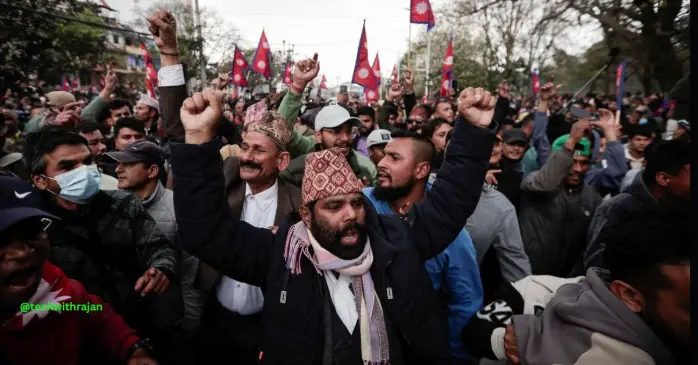
The Rastriya Prajatantra Party (RPP) recognized the momentum building behind the former king and strategically canceled other planned events to organize a grand welcome in Kathmandu following Gyanendra's western Nepal tour. Working alongside the "Save the Nation, Culture, and Dharma" campaign, which had already held a rally in Kathmandu on March 5, 2025, they mobilized supporters for his return.
What transpired on March 9 exceeded even organizers' expectations. An estimated 10,000 supporters converged on Tribhuvan International Airport, creating a massive human barrier that forced regular passengers to abandon vehicles and walk to and from the terminals. Red and blue national flags waved above the crowd, alongside banners declaring "Vacate the royal palace for the king" and "We want monarchy."
Images of the 77-year-old former king waving to the adoring crowd quickly spread across social media and international news outlets. Though he made no formal statement, his dignified acknowledgment of supporters spoke volumes. The government's deployment of hundreds of riot police around the airport and the former Narayanhiti Palace underscored the authorities' concern about the growing movement.
12. Will the Monarchy Be Restored?
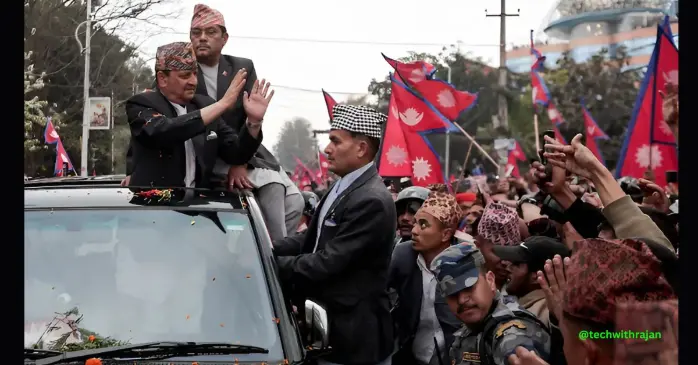
As Nepal approaches the 20th anniversary of the 2006 protests that began the end of monarchical rule, the question of restoration has moved from fringe fantasy to legitimate political debate. Several factors are driving this remarkable resurgence:
1. Persistent Political Instability:
Since becoming a republic in 2008, Nepal has experienced frequent government changes, political deadlocks, and institutional dysfunction. The promise that republicanism would bring stability has largely gone unfulfilled, creating nostalgia for the perceived order of the monarchical era.
"People remember that under the constitutional monarchy before King Gyanendra's direct rule, there was a functioning system," explains Dr. Sushila Sharma, political scientist at Tribhuvan University. "The current turmoil makes that period look golden in retrospect, even if that's not entirely accurate."
2. Economic Struggles:
Nepal's economy has faced multiple challenges, from the 2015 earthquake recovery to the COVID-19 pandemic and global inflation. Per capita income remains low, unemployment high, and remittances from overseas workers continue to prop up household finances.
"When people struggle to feed their families, they look for someone to blame," notes economist Rajendra Poudel. "The republic has had 17 years to deliver economic prosperity and hasn't succeeded. This creates space for monarchist sentiment, even if restoration wouldn't necessarily improve economic conditions."
3. Corruption Concerns:
Widespread corruption allegations against elected officials have undermined public faith in the republican system. Transparency International consistently ranks Nepal poorly in corruption perception indices, fueling disillusionment with democratic institutions.
"Under the king, there was corruption too, but it was seen as more contained," says anti-corruption activist Maya Gurung. "Now people perceive corruption as endemic across all levels of government, without the counterbalance of royal authority."
4. Cultural and Religious Identity:
Many Nepalese, particularly those with traditional values, view the monarchy as intrinsically linked to Nepal's cultural and religious identity as a Hindu nation. The 2015 constitution established Nepal as a secular state, disappointing those who saw Hindu identity as fundamental to national character.
"For centuries, our king was seen as an incarnation of Lord Vishnu," explains Hindu priest Narayan Prasad Bhattarai. "When we removed the monarchy, we severed a spiritual connection that many Nepalese still value deeply."
5. Changed Perspectives:
Perhaps most surprisingly, some who initially supported abolishing the monarchy have reversed their position, disappointed by the performance of the federal republic.
"I marched against King Gyanendra in 2006," admits former student activist Bipin Adhikari, now 40. "I believed we needed full democracy. But what we got wasn't what we fought for. Now I wonder if a constitutional monarchy might have been the better path."
13. Obstacles to Restoration:
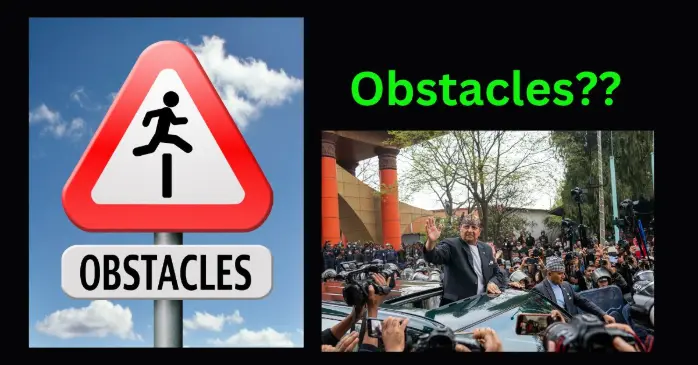
Despite growing support, significant obstacles remain to any formal restoration:
a. Constitutional Barriers:
Reestablishing the monarchy would require amending the 2015 constitution, a process requiring a two-thirds majority in parliament. Given the current political landscape, achieving such consensus seems unlikely without extraordinary public pressure.
b. International Context:
The global trend has long moved away from monarchies toward republics. While some constitutional monarchies thrive (particularly in Europe), restoring an abolished monarchy would run counter to contemporary political currents.
c. Elite Opposition:
Nepal's political, bureaucratic, and business elites have adapted to republican structures. Many would resist any return to monarchy that might threaten their positions and interests.
d. The Shadow of 2005:
Gyanendra's controversial period of direct rule from 2005-2006 remains a significant liability. Critics argue that his authoritarian tendencies would reemerge if given another opportunity, regardless of promises to function as a constitutional monarch.
14. The Path Forward:
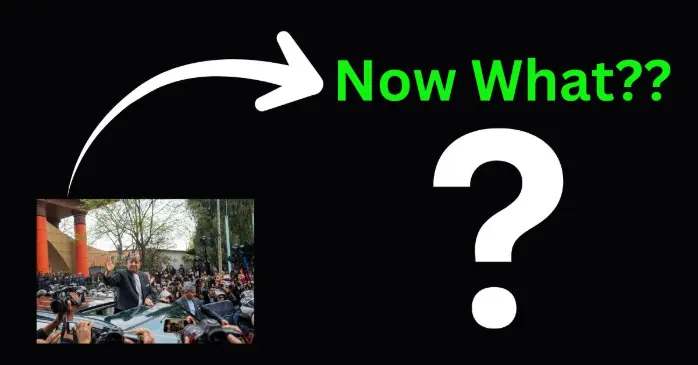
As Nepal navigates this unexpected monarchist resurgence, several scenarios could unfold:
Scenario 1: Constitutional Referendum:
Growing pressure might force the government to hold a referendum on restoring the monarchy, potentially linked to reestablishing Nepal as a Hindu state. This would provide democratic legitimacy to any constitutional changes.
Scenario 2: Limited Ceremonial Role:
A compromise might emerge where Gyanendra (or Crown Prince Paras) assumes a purely ceremonial role without constitutional powers, similar to monarchs in the United Kingdom or Japan.
Scenario 3: Republican Consolidation:
The current demonstrations might ultimately fade if republican politicians address the underlying governance issues fueling monarchist sentiment. Improved economic performance and reduced corruption could strengthen public support for the current system.
Scenario 4: Continued Ambiguity:
The most likely immediate outcome is continued uncertainty, with monarchist sentiment existing as a pressure valve for public frustration without immediate constitutional changes.
15. Conclusion: A Nation at a Crossroads:
As the sun set over Kathmandu on March 9, 2025, the crowds gradually dispersed, but the questions they raised linger. Nepal stands at a fascinating historical crossroads – a young republic grappling with the shadow of its monarchical past.
Gyanendra Shah – the boy who became king twice through extraordinary circumstances – continues to cast a long shadow over Nepal's political landscape, even 17 years after leaving his throne. His journey from child king to absolute monarch to private citizen and now potential restoration figure encapsulates Nepal's complex modern history.
Whether the chants of "Come back king, save the country" represent a temporary expression of frustration or the beginning of a genuine restoration movement remains to be seen. What is clear, however, is that Nepal's experiment with republicanism faces its most serious challenge since 2008.
As one elderly supporter at the airport remarked, clutching a faded photograph of a younger Gyanendra: "The king is like the Himalayan mountains – even when clouds obscure them, we know they are there, eternal and watching over us. Perhaps it is time for the clouds to clear."
For a nation caught between tradition and modernity, between stability and freedom, between memory and aspiration, the coming months may prove decisive in determining whether the Shah dynasty's story has truly ended or merely entered an unexpected new chapter.
What are you point of view? Please comment so other people also can know your view!!🥰
Will Monarchy Be Restored in Nepal? Will Gyanendra Return to Power? The Rise of Pro-Monarchy Sentiments: